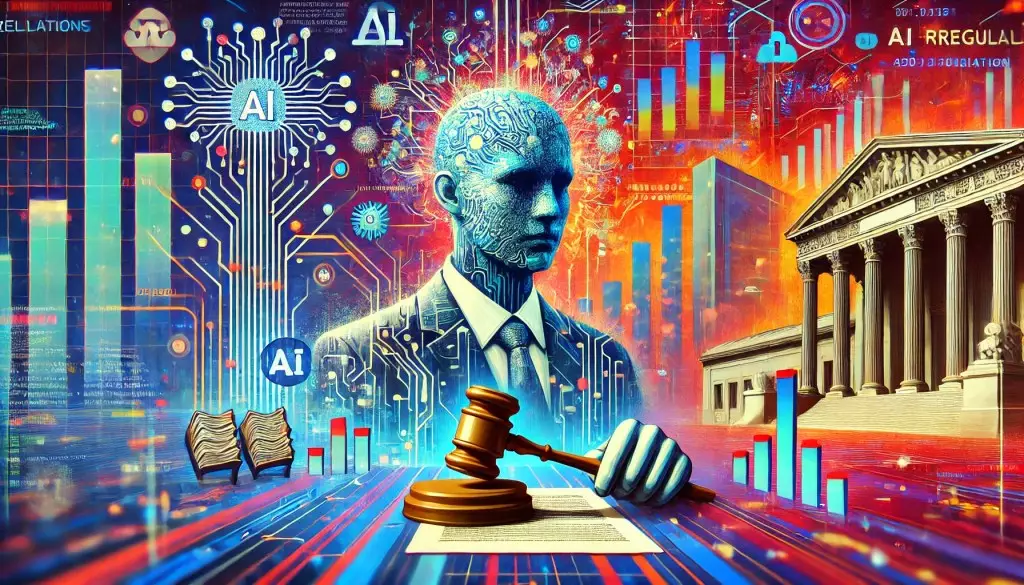With the retraction of an Executive Order aimed at regulating artificial intelligence, the landscape of AI development in the United States has been thrust into a new phase. The striking shift in policy underscores a pivotal moment for U.S. AI innovation, as leaders from top technology companies advocate for a hands-off, market-driven approach characterized by enhanced infrastructure and global collaboration. The recent heated Senate Committee hearing saw prominent figures from AI heavyweights such as OpenAI, Microsoft, and AMD make the case for why America must prioritize rapid development and deployment of AI technologies without excessive government regulation.
The Race for AI Infrastructure
During the Senate hearing—weighing in on the nation’s AI future—CEO of OpenAI, Sam Altman, framed the discourse around urgent infrastructure needs. He passionately argued that to stimulate AI’s next wave, the U.S. will require not just advancements in software but vital support in terms of physical infrastructure—a task that could fundamentally reshape how AI interacts with daily life. The sentiment echoed throughout the gathering emphasized that creating data centers and power plants is indispensable for maintaining America’s lead in the global AI race, particularly with fierce competition from nations like China.
What stands out here is the consensus among industry leaders on the importance of expedience. They argue that delays in permitting processes pose significant challenges to progress, inhibiting the speed and efficiency of AI deployment. The matter at hand is not merely about building facilities but about sculpting an ecosystem capable of nurturing innovative growth—a perspective that may sideline regulatory measures that can stifle momentum.
Collaborative Innovation: Bridging Gaps in Talent and Technology
Equally vital to the discussion was the pressing need for skilled labor. As the digital landscape shifts, advanced technology requires not only software engineers but also a range of technicians, electricians, and other professionals who can support this burgeoning sector. Leaders like AMD’s Lisa Su and Microsoft’s Brad Smith articulated a need for reform in immigration policies to attract talent from around the world.
The dialogue highlighted the essential nature of collaboration among nations in AI innovation. Smith’s assertion that “no company or country can win this race by itself” reflects a broader narrative that transcends borders. The requirement for diverse expertise from global talent pools resonates with the increasingly interconnected nature of technological development. The U.S. stands to benefit profoundly from harnessing this international collaboration, enriching its own talent landscape while increasing competitive advantages globally.
The Landscape of AI Diffusion
A notable theme in the hearing was the concept of “AI diffusion”—the integration of AI across various sectors of the economy to enhance productivity and spur innovation. This vision rests on the ability to adopt technology quickly and efficiently, empowering American businesses to thrive. AI diffusion underscores a proactive stance that goes beyond the theoretical capabilities of AI systems; it champions a methodology for embedding these technologies into daily operations, thereby transforming industries from the ground up.
The executives echoed a critical angst regarding existing export policies that could hinder international collaboration. By restricting access to AI models from the U.S. to select countries only, they signaled this approach might jeopardize not only the U.S. position in global tech but also stifle collaborative opportunities for creating cutting-edge AI solutions. They argued for a removal of quantitative caps for tier two nations—an acknowledgment that AI must be a global dialogue rather than one dictated by isolationist policies.
Regulatory Revisions and their Impacts
As the Trump administration surveys its stance on AI regulations, discussions at the hearing reveal a potential divergence from previous approaches. The executives displayed cautious optimism about adjustments to export rules that would liberate U.S. AI technology for broader access. However, they remain wary of overly stringent regulations that would require pre-approval before the launch of new AI models, similar to measures proposed in the European Union.
The need for flexibility in regulatory frameworks resonates strongly not only within the industry but among policymakers themselves. The crux of the dialogue at the hearing lay at the intersection of innovation and oversight—a domain that requires deft navigation to neither stifle creativity nor leave the public vulnerable to unforeseen consequences. As AI increasingly influences personal and professional realms alike, leaders must tread carefully and work to find a balance between facilitating growth and ensuring accountability.
In Summary
While the road ahead is complex and uncertain, one thing remains clear: the future of artificial intelligence in America relies on a collective effort that fosters innovation, encourages collaboration, and embraces the global dimensions of technological development. The Senate hearing illuminated the need for swift action to build a robust AI infrastructure and a transparent dialogue on regulation that can adequately address the nuances of this evolving landscape. In this era of artificial intelligence, the U.S. cannot afford to be stagnant; it must evolve and adapt, embracing change to secure a competitive edge in the world stage.


Leave a Reply